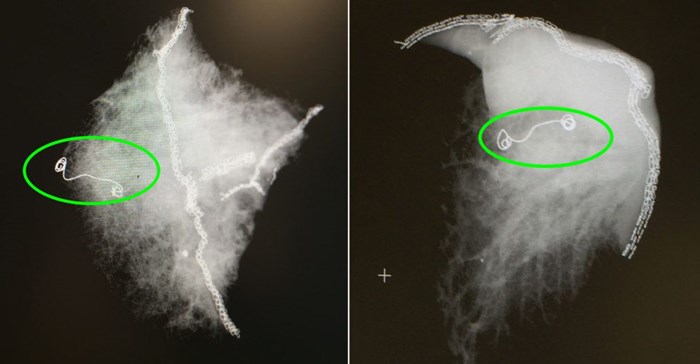Micorocoil localisation in treating early-stage lung cancer

“Rather than cutting out an entire lobe, or potentially even an entire lung, we can just take out a small bit of tissue,” said Dr Jason Lempel, a thoracic radiologist at Cleveland Clinic in the United States. “We’re able to treat patients with early-stage lung cancers quickly and thus decrease the chance of the cancer spreading.”
Cleveland Clinic is one of a handful of medical centre to offer the surgery. A review of the team’s first 20 cases has revealed a 100% success rate in retrieving the target lesion with clear margins, meaning no cancer cells were detected at the outer edge of the removed tissue.
When potentially cancerous small nodules or lesions are detected in the lungs, the typical approach is to monitor the situation with annual computed tomography (CT) scans. If any progression in the growths’ shape or size is detected, physicians can take proactive steps, including lobectomy (partial removal of the lung), radiation or chemotherapy, should they develop into cancer.
Procedure
The two-stage procedure uses a using the hybrid operating room CT scanner and its advanced software capabilities to guide a needle pre-loaded with a soft, fibre-coated platinum thread through the chest wall, then through the lung and finally, into the target nodule. This coil is carefully anchored to the nodule before the needle is removed.
Using video-assisted thoracoscopic technology (Vats), a thoracic surgeon locates the coil on the membrane around the lungs – the pleural surface – and carefully resects it along with the wedge of tissue containing the small nodule or lesion. The team can then instantly examine the tissue, make a diagnosis and, if necessary, perform further surgical treatment.
Raymond is optimistic that microcoil localisation may one day vastly reduce the need for lobectomy, a surgical procedure in which a much larger section of the lung tissue is removed.
“Eighty-five percent of lung cancer patients present with stage 4 disease, where the (cancer) has spread to the bone or brain,” he said. “If we can detect these patients earlier with CT screening and use microcoil techniques to treat patients sooner, we’re going to be able to treat many more patients and save a lot of lives in the process.”








